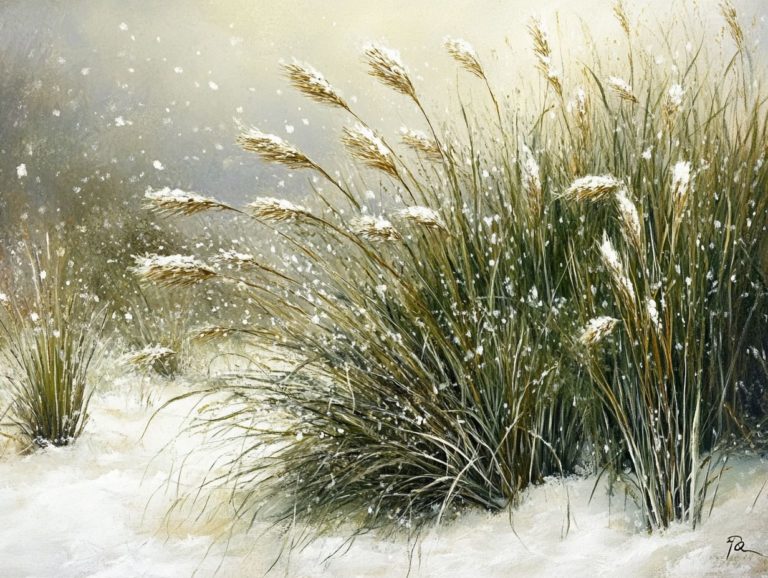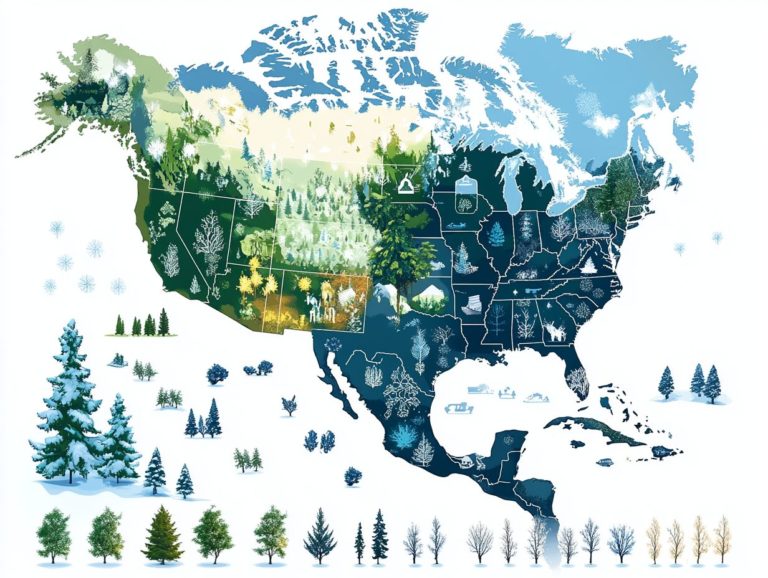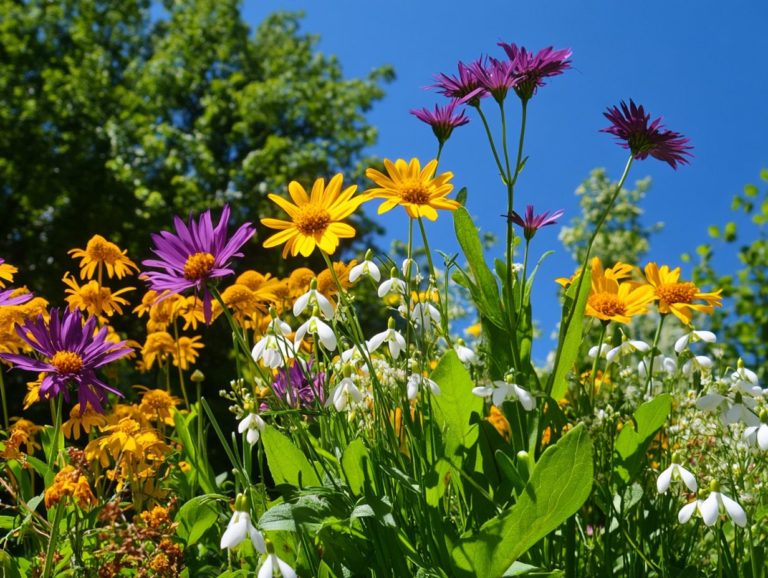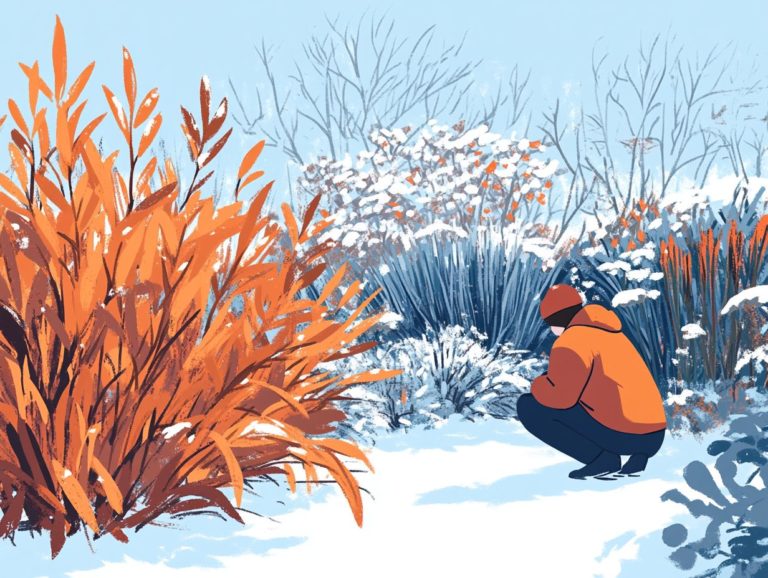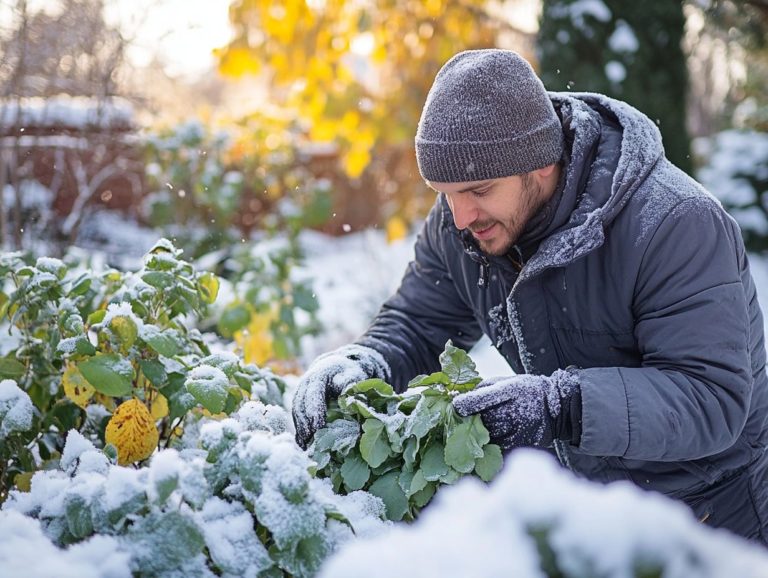Top 5 Tips for Selecting Cold-Hardy Plants
When gardening in colder climates, selecting cold-hardy plants is crucial for creating a lively garden. These resilient varieties not only endure low temperatures but also enhance the beauty and vitality of your outdoor spaces.
This article explores the importance of cold-hardy plants and outlines key factors to consider when choosing them. You ll find five practical tips to help you make informed selections.
It also explains how to care for your hardy plants, ensuring they thrive season after season. Immerse yourself in the insights provided and learn how to craft a stunning garden that stands strong against the elements!
Contents
- Key Takeaways:
- The Importance of Cold-Hardy Plants
- Factors to Consider When Selecting Cold-Hardy Plants
- Top 5 Tips for Choosing Cold-Hardy Plants, including insights on using high tunnels and greenhouses.
- Caring for Cold-Hardy Plants
- Frequently Asked Questions
- What are the top 5 tips for selecting cold-hardy plants?
- Why is it important to choose cold-hardy plants?
- What are some examples of cold-hardy plants?
- How can I protect my cold-hardy plants during extreme cold spells?
- Can I still have a diverse garden with cold-hardy plants?
- What are some common mistakes to avoid when selecting cold-hardy plants?
Key Takeaways:
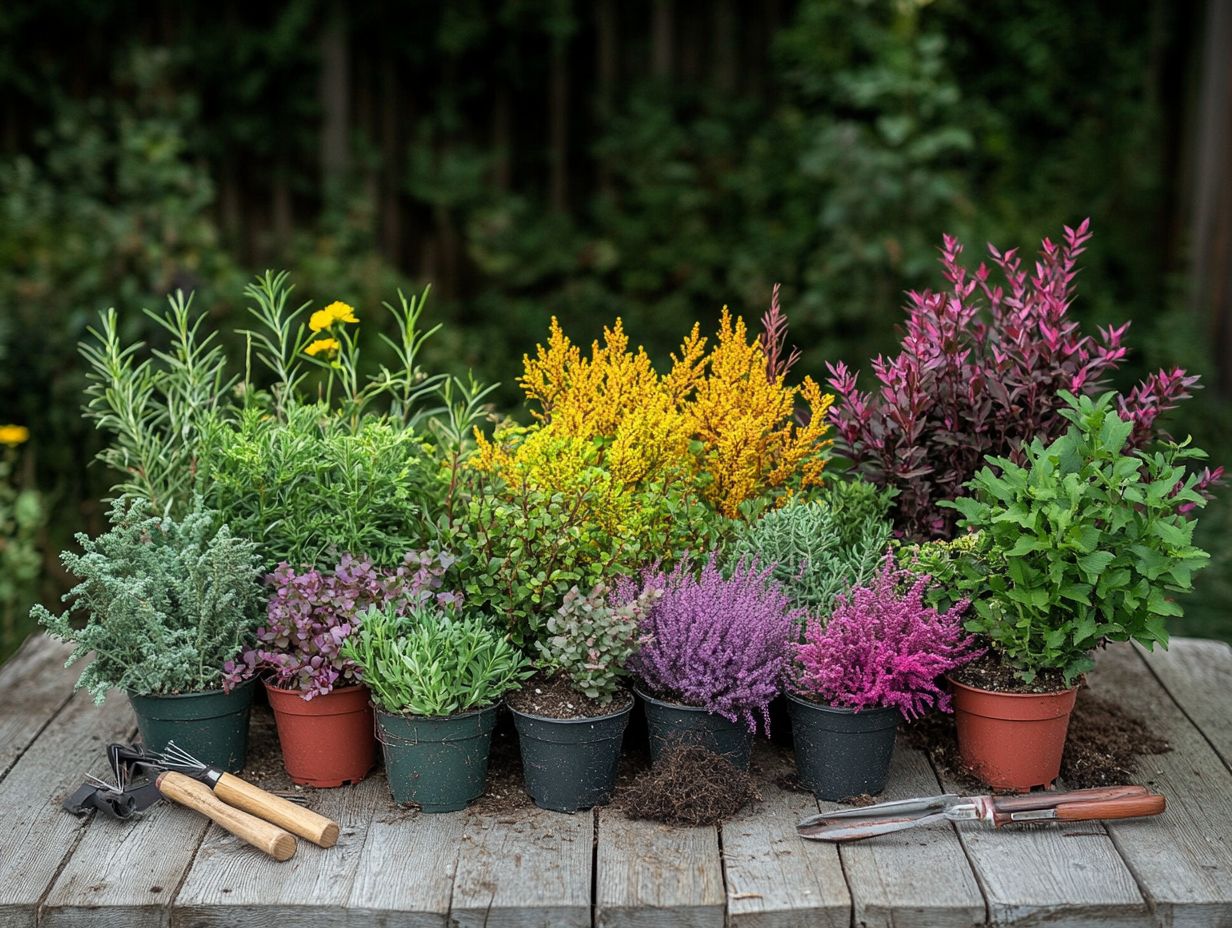
- Selecting cold-hardy plants is important for the survival and success of your garden, especially in areas with harsh weather conditions.
- Consider factors such as climate, soil conditions, and plant hardiness zones when choosing cold-hardy plants.
- Research hardiness zones, check your local climate, choose resilient and native species, and consult with experts to ensure the best selection of cold-hardy plants for your garden.
The Importance of Cold-Hardy Plants
Cold-hardy plants are essential for successful gardening, especially in climates like Utah, where the growing season can be quite challenging. These resilient species enable you to garden year-round, allowing you to cultivate your vegetable garden even when the temperatures drop.
By integrating cold-hardy varieties into your garden, you can secure a steady supply of fresh produce, prolong your harvests, and elevate your organic gardening practices. Recognizing the significance of these plants is vital for anyone aiming to maximize their gardening potential and adapt their strategies for effective season extension.
Why Choose Cold-Hardy Plants?
Choosing cold-hardy plants is crucial for gardeners looking to maximize their vegetable crops and ensure a reliable harvest year-round.
These resilient varieties have evolved to withstand harsh climates, allowing them to thrive even when temperatures take a nosedive. By incorporating cold-hardy vegetables like kale and spinach into your garden, you can cultivate a vibrant, sustainable food source that continues to provide nutrient-dense options long after traditional crops have faded away.
This strategy boosts the diversity of your garden and supports organic gardening initiatives, promoting food security and reducing your reliance on grocery stores during the colder months. Such resilience makes these plants not just a practical choice they re a strategic element in your journey toward self-sufficient gardening.
Factors to Consider When Selecting Cold-Hardy Plants
When selecting the right cold-hardy plants, consider several important factors. Climate, soil conditions, and hardiness zones play a crucial role in their growth and development. Understanding your hardiness zones will guide your planting choices.
Evaluating these elements will ensure you make informed choices that lead to thriving plants in your garden.
Climate and Temperature
The climate and temperature of your region are essential factors in determining which cold-hardy plants will truly thrive in your garden.
In areas like Utah, where the climate is a fascinating mix of desert and mountainous terrains, making the right selection becomes even more crucial. You need to consider the temperature extremes that fluctuate dramatically with the seasons, the amount of sunlight your garden receives, and the type of soil you have.
For instance, resilient plants like Russian Sage and the vibrant Penstemon can flourish in these unique conditions, adding both color and texture to your landscape. Additionally, varieties of Hellebores and certain evergreens, such as Boxwood, are particularly well-suited to endure chilly nights, making them excellent choices for visual interest.
By understanding these specific climate conditions, you can develop a more thoughtful and ultimately successful planting strategy.
Start your journey to a flourishing garden today!
Soil Conditions
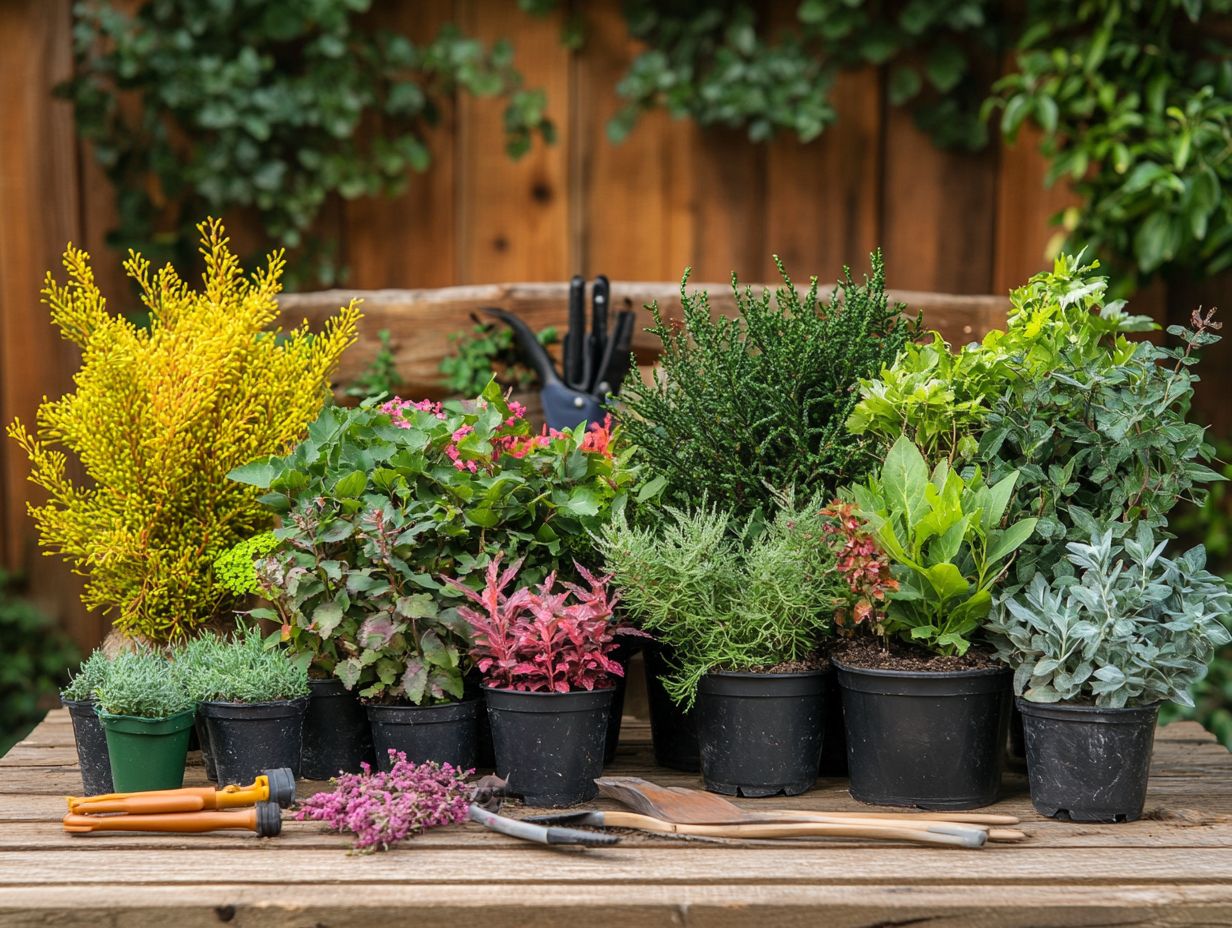
Soil conditions are essential for the success of cold-hardy plants, as they directly impact nutrient availability and drainage, both critical for healthy growth.
Understanding different soil types and their characteristics is vital for gardening success. Specific plants thrive in particular environments.
The acidity levels can greatly influence nutrient uptake, ensuring these resilient plants receive the essential elements they need for robust development.
Organic matter plays a pivotal role in enhancing soil structure, improving moisture retention, and fostering beneficial microbial activity. Applying mulch creates a protective layer, conserving moisture and regulating temperature, which creates an optimal environment for the roots.
When you consider these factors together, they form a solid foundation for cold-hardy plants to flourish, even in the face of challenging conditions.
Plant Hardiness Zones
Understanding plant hardiness zones is essential for you as a gardener, guiding you in selecting cold-hardy plants that can thrive in your local climate conditions.
These zones are determined by analyzing average annual minimum temperatures, providing you with a reliable map that indicates where certain species are most likely to flourish. Experts like AJ and Rick Stone from Our Stoney Acres highlight the importance of these zones, pointing out that choosing crops suited to local conditions not only boosts your gardening success but also fosters sustainable practices.
By embracing this research, you position yourself to reap a bountiful harvest while minimizing the risks that come with planting species ill-suited to harsher climates.
Top 5 Tips for Choosing Cold-Hardy Plants, including insights on using high tunnels and greenhouses.
Get ready to discover five expert tips that will transform your gardening experience! Selecting the right cold-hardy plants can elevate your gardening experience to new heights. These five expert tips will enable you to make informed choices, ensuring that your vegetable gardens and organic gardening endeavors thrive beautifully, including the use of mini hoop houses for starting seedlings early.
Tip 1: Research Plant Hardiness Zones
Researching plant hardiness zones is your first step toward selecting the most suitable cold-hardy plants for your garden, as well as considering structures like greenhouses for optimal growth.
These zones, determined by minimum winter temperatures, provide you with vital insights into which plants can thrive in your local climate. By understanding the specifics of each zone, you can significantly enhance your gardening success, choosing species that are perfectly adapted to flourish in your region.
For instance, if you find yourself in a Zone 3 area, consider incorporating hardy varieties like the Arctic Fire dogwood or the Winterberry holly, both renowned for their resilience in frigid temperatures. On the other hand, if you’re gardening in Zone 6, you can revel in the lush beauty of butterfly bushes or coneflowers, taking full advantage of a milder climate.
By familiarizing yourself with these zones, you not only make informed plant choices but also cultivate a more sustainable and vibrant garden.
Tip 2: Consider Local Climate
Considering your local climate is essential when selecting cold-hardy plants, as it guides you toward varieties that will truly thrive in your specific conditions.
In Utah, the diverse climate from arid deserts to mountainous areas significantly impacts which cold-hardy species will flourish. For example, in higher elevation regions where temperatures dip and snowfall is substantial, you ll find that plants like the Alpine aster or Siberian iris are well-suited to endure those harsh winters.
On the flip side, in lower elevation areas with milder winters, you might have great success with native plants such as the Utah juniper or various sage types. These not only withstand frost but also require less water, making them ideal for a sustainable garden.
Grasping these local nuances is your ticket to successful gardening don t miss out!
Tip 3: Look for Resilient Plants
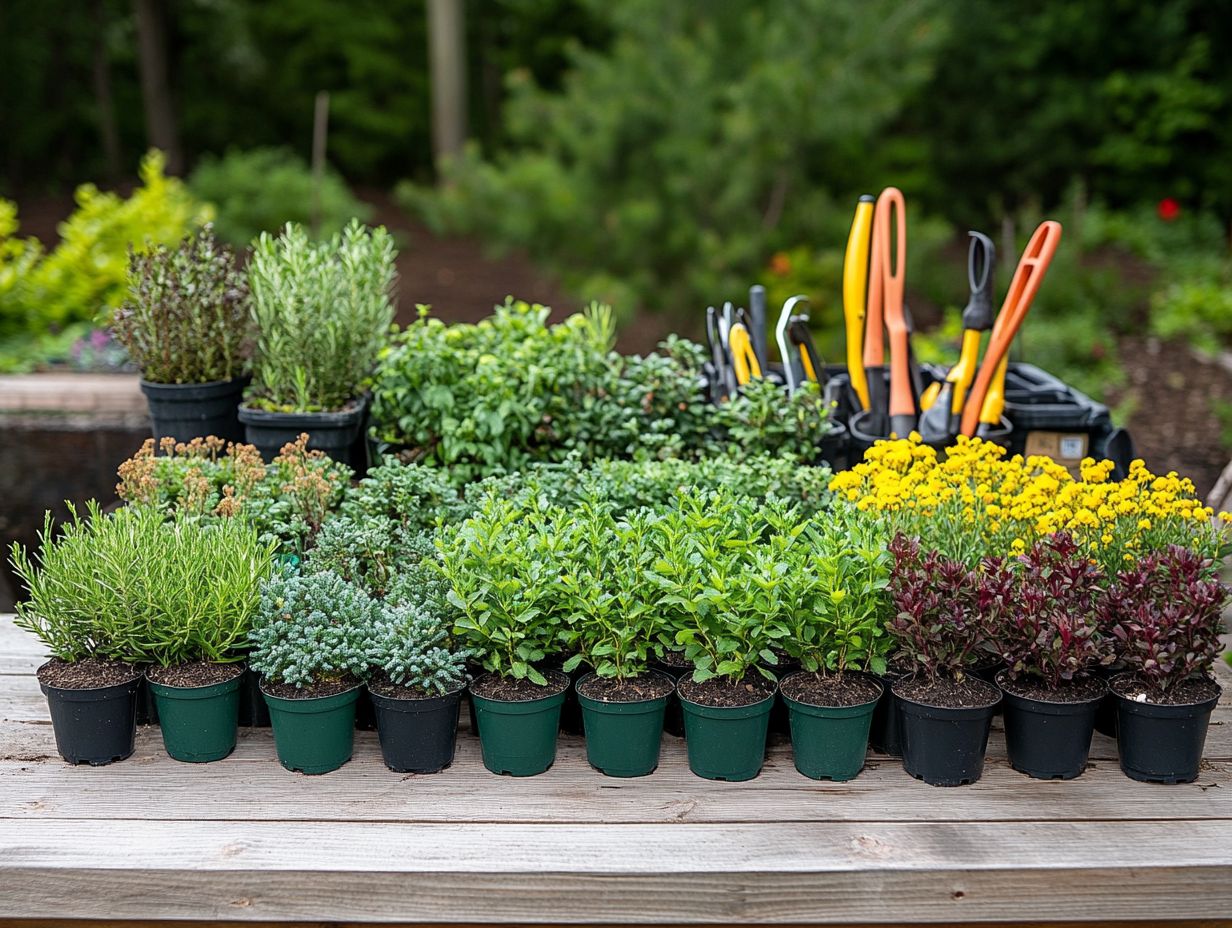
When selecting cold-hardy plants, look for resilient varieties that can withstand harsh conditions while delivering abundant harvests. These include various leafy vegetables like kale and broccoli, known as Brassicas, which provide great yields.
These plants typically feature impressive traits such as deep root systems, thick foliage, and the ability to thrive in less-than-ideal soil.
Varieties like kale, Brussels sprouts, and certain root vegetables not only endure frigid temperatures but also contribute to your garden s sustainability. Incorporating these robust plants significantly enhances your organic gardening efforts. They require less intervention and provide essential nutrients to the soil.
They also act as natural pest repellents, minimizing the need for chemical treatments and fostering a healthier ecosystem. By choosing these hardy champions, you ll be well on your way to cultivating a thriving, resilient landscape, regardless of the challenges nature throws your way.
Tip 4: Choose Native Species
Choosing native cold-hardy plants is a superb strategy for cultivating a sustainable and flourishing garden ecosystem. These plants adapt effortlessly to local climates and require less maintenance and water than their non-native counterparts.
Their natural resilience allows them to endure harsh winters and unpredictable weather, which is crucial for long-term gardening success. Incorporating these native plants into your garden actively contributes to local biodiversity, creating vital habitats for pollinators and other wildlife.
This approach aligns seamlessly with organic gardening practices, minimizing the need for chemical fertilizers and pesticides. In doing so, you foster a healthier soil ecosystem and promote a balanced, interconnected environment that benefits both your garden and the planet.
Tip 5: Consult with Experts
Consulting with gardening experts, like Rick Stone from Our Stoney Acres, can offer invaluable insights into selecting and nurturing cold-hardy plants. Their expertise in local climate conditions, soil types, and plant varieties ensures your choices thrive in your unique environment.
These specialists often provide experience-backed recommendations tailored to the specific challenges your garden faces whether it s frosty pockets or gusty winds. Tapping into local resources like gardening clubs or extension services enables you to make informed decisions.
Engaging with these communities deepens your understanding of local flora and cultivates a sense of camaraderie among fellow gardening enthusiasts who share your aspirations.
Caring for Cold-Hardy Plants
Caring for cold-hardy plants requires you to implement easy care tips and protection strategies to ensure they flourish under varying conditions. Understand what your plants need and adapt your care methods accordingly to create an environment where these resilient plants truly thrive.
Proper Maintenance and Protection
Proper maintenance and protection of cold-hardy plants are essential for their survival, especially during extreme weather conditions. To ensure these resilient plants thrive, employ a combination of techniques and protective measures:
- Mulching: Retains soil moisture and regulates temperature, shielding the roots from severe fluctuations.
- Regular watering: Crucial during warmer spells to support hydration needs.
- Nutrient management: Apply organic fertilizers to enhance soil health and strengthen plants against stress.
- Protective solutions: Utilize cloches and row covers to create a microclimate. Hoop houses are temporary structures that protect plants from harsh weather and offer robust shielding from winds and frost.
Frequently Asked Questions
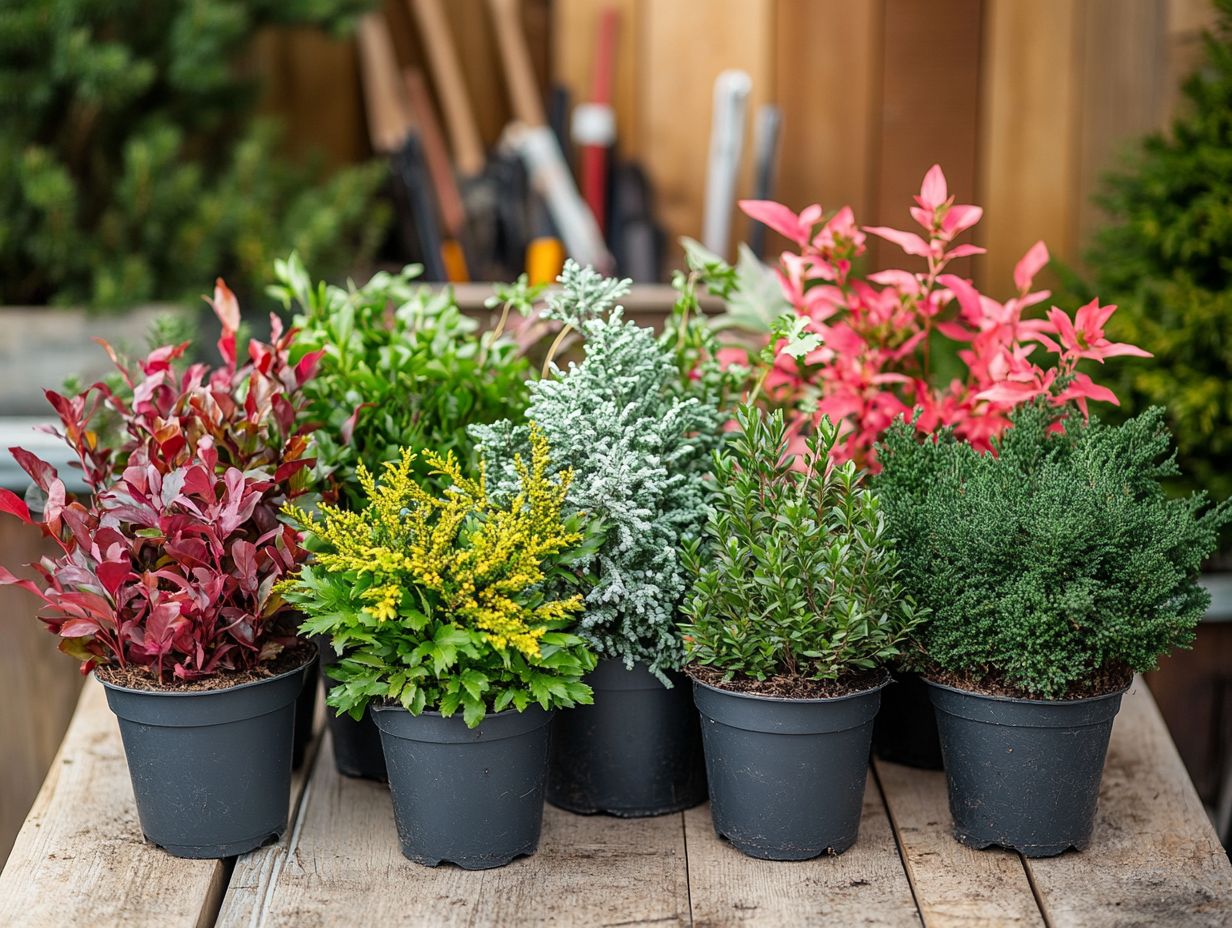
Get started today and transform your garden into a thriving green sanctuary!
What are the top 5 tips for selecting cold-hardy plants?
1. Consider the USDA Hardiness Zone: The first step in selecting cold-hardy plants is to determine your USDA Hardiness Zone. This is based on average annual minimum temperatures. Choose plants recommended for your specific zone for the best chance of survival in cold temperatures.
2. Look for Native Plants: Native plants thrive in your local climate, making them more likely to survive cold temperatures. Research which plants are native to your region and incorporate them into your garden. They come in various growth habits that provide protection for more delicate plants.
3. Choose Evergreens: Evergreen plants keep their foliage throughout the year. This provides year-round interest and protection for other plants in winter. Look for evergreen options suited to your climate.
4. Read Labels and Do Your Research: When selecting cold-hardy plants, read the labels carefully. Make sure you choose plants that fit your climate and growing conditions.
5. Know Growth Habits: Pay attention to how plants grow. Plants that are low and spreading, like groundcovers, can help protect more delicate plants during cold weather.
Why is it important to choose cold-hardy plants?
Cold-hardy plants thrive in colder temperatures. They re perfect for regions with harsh winters, ensuring your garden remains vibrant all year.
What are some examples of cold-hardy plants?
Popular cold-hardy plants include conifers like pine and spruce trees. Evergreen shrubs such as holly and boxwood are great choices too. Perennials like asters, hostas, and daylilies are also known for their cold tolerance.
How can I protect my cold-hardy plants during extreme cold spells?
Take action during extreme cold! Use frost blankets or mulch to insulate roots. Cover plants or bring potted ones indoors for their safety.
Can I still have a diverse garden with cold-hardy plants?
Absolutely! There are many cold-hardy plants with a wide range of colors, textures, and sizes. By researching and choosing a variety, you can create a diverse and visually appealing garden that withstands colder temperatures.
What are some common mistakes to avoid when selecting cold-hardy plants?
Avoid planting unsuitable plants for your zone. Remember to consider growth habits, water needs, and don t plant too early in the season, as unexpected cold spells can occur.

